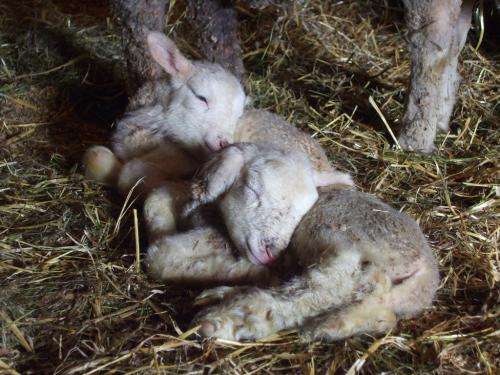The next step will be to ask if the ewes’ immune systems are rejecting the pregnancies, and if so, what can be done to stop it. Credit: Knitting Iris
A group of WA researchers say the reason for early reproductive losses in Merino lambs is not a matter of the mother's age or liveweight, but their genetics.
The researchers tested the reproductive performance of 224 Merino ewes born from 10 different sires, finding their chances of reproductive success were connected to which sire they came from.
"Ewes from one sire certainly had a much higher incident of failed pregnancy than another sire and that was quite interesting if not surprising because of course traits like reproduction will certainly have a genetic component," says Department of Agriculture and Food research officer Beth Paganoni.
"It was wonderful that we were able to detect that because there were only up to 20 ewes represented per sire, so that was quite a big difference to find."
The ewe lambs were tested at various stages of mating and pregnancy.
The ewes' blood progesterone levels were recorded on days five, 12, and 17 after the first record of ram mounting.
On days nine and 30, the researchers conducted rectal ultrasonography to measure the number of corpora lutea—structures on the ovaries signifying ovulation.
Ms Paganoni says this is important for measuring any loss of embryos.
"At day nine if she appeared to ovulate two eggs but then at day 30 if there's only one embryo, then we would have a partial loss in that ovulation," she says.
Each day is significant in the measuring process.
"Day 12-17 is a period known as maternal recognition of pregnancy, where the immune system of the ewe recognises that it has this foreign body inside it and tries to reject it or prepare an immune response to it," she says.
"That was a really interesting period for us as well to see if perhaps because the ewe lambs are still growing—they haven't reached their mature weights yet—the immune system is more successful at rejecting these eggs."
In total 150 ova were released by 100 ewe lambs and 24 of those survived to post-weaning age.
Ms Paganoni says the next step is to ask if the ewes' immune systems are rejecting the pregnancies, and if so, what can be done to stop it.
"This study points a lot of keyhole science questions that need to be asked at a real laboratory-based level, but in terms of information that farmers can use straight away is that yes, ewes can be joined at this young age," she says. She also maintains that heavier ewes at post-weaning age are more fertile.
More information: The report is available online: www.publish.csiro.au/nid/72/paper/AN13240.htm
Provided by Science Network WA






















